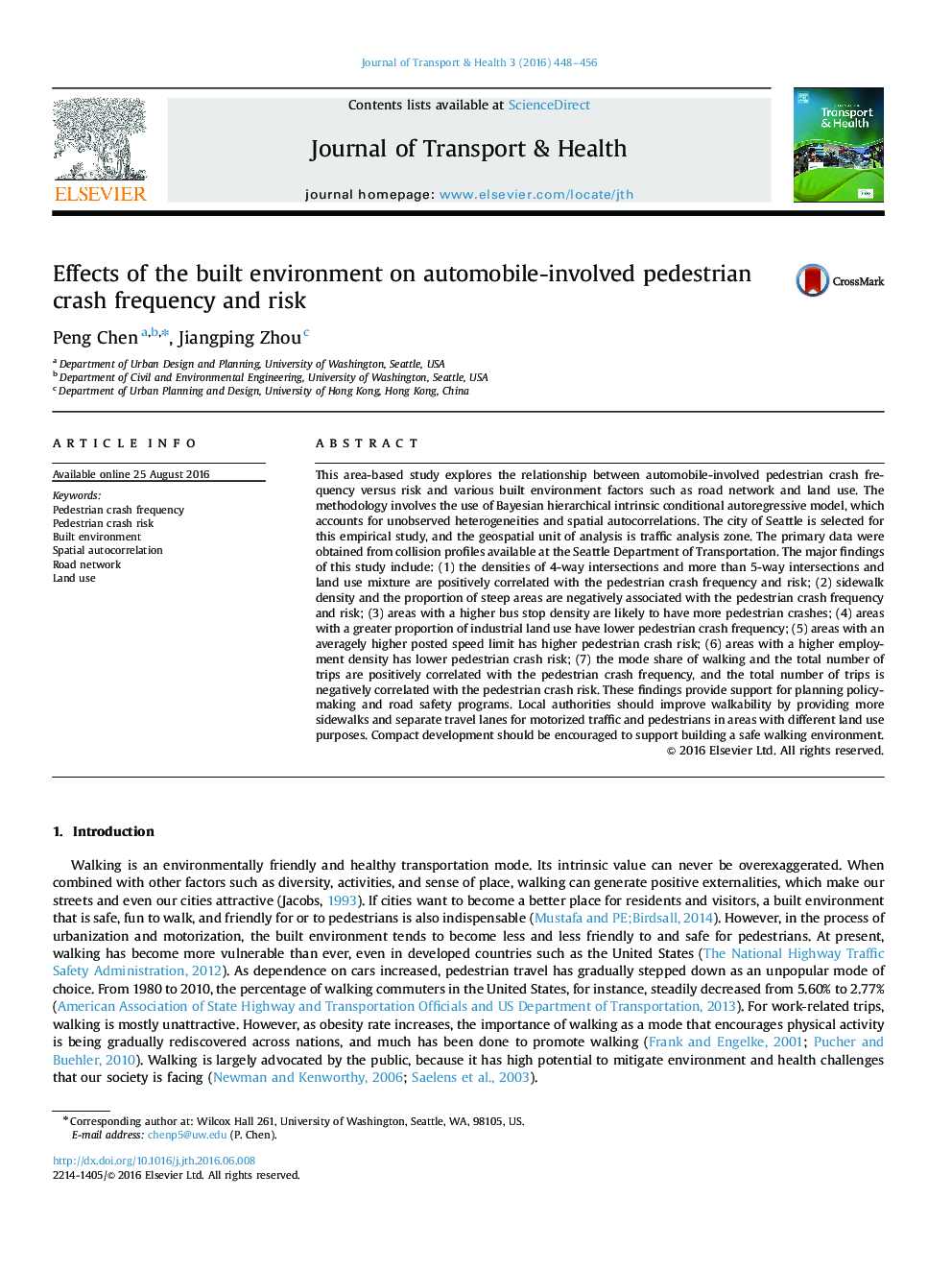| کد مقاله | کد نشریه | سال انتشار | مقاله انگلیسی | نسخه تمام متن |
|---|---|---|---|---|
| 5117698 | 1378136 | 2016 | 9 صفحه PDF | دانلود رایگان |
This area-based study explores the relationship between automobile-involved pedestrian crash frequency versus risk and various built environment factors such as road network and land use. The methodology involves the use of Bayesian hierarchical intrinsic conditional autoregressive model, which accounts for unobserved heterogeneities and spatial autocorrelations. The city of Seattle is selected for this empirical study, and the geospatial unit of analysis is traffic analysis zone. The primary data were obtained from collision profiles available at the Seattle Department of Transportation. The major findings of this study include: (1) the densities of 4-way intersections and more than 5-way intersections and land use mixture are positively correlated with the pedestrian crash frequency and risk; (2) sidewalk density and the proportion of steep areas are negatively associated with the pedestrian crash frequency and risk; (3) areas with a higher bus stop density are likely to have more pedestrian crashes; (4) areas with a greater proportion of industrial land use have lower pedestrian crash frequency; (5) areas with an averagely higher posted speed limit has higher pedestrian crash risk; (6) areas with a higher employment density has lower pedestrian crash risk; (7) the mode share of walking and the total number of trips are positively correlated with the pedestrian crash frequency, and the total number of trips is negatively correlated with the pedestrian crash risk. These findings provide support for planning policy-making and road safety programs. Local authorities should improve walkability by providing more sidewalks and separate travel lanes for motorized traffic and pedestrians in areas with different land use purposes. Compact development should be encouraged to support building a safe walking environment.
Journal: Journal of Transport & Health - Volume 3, Issue 4, December 2016, Pages 448-456
